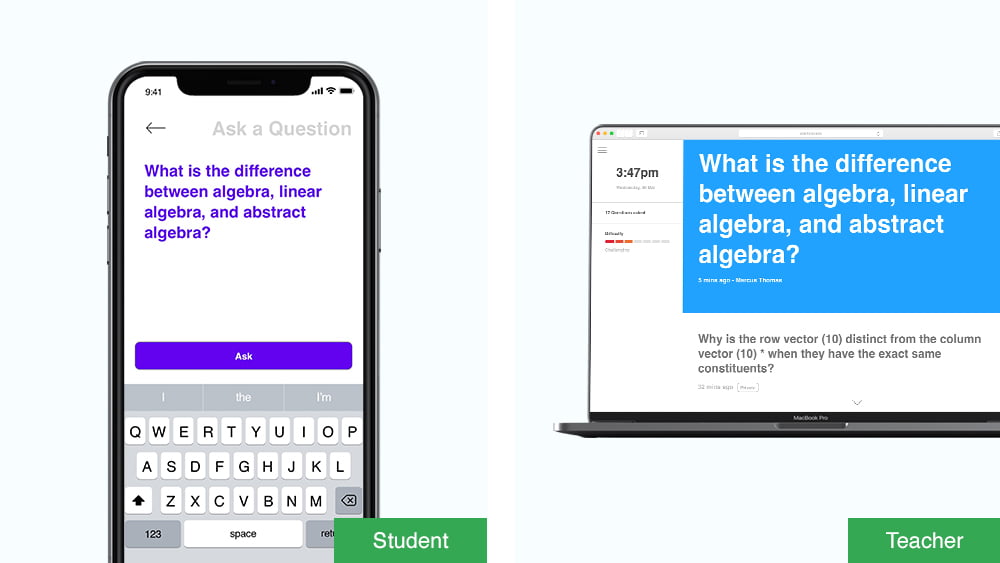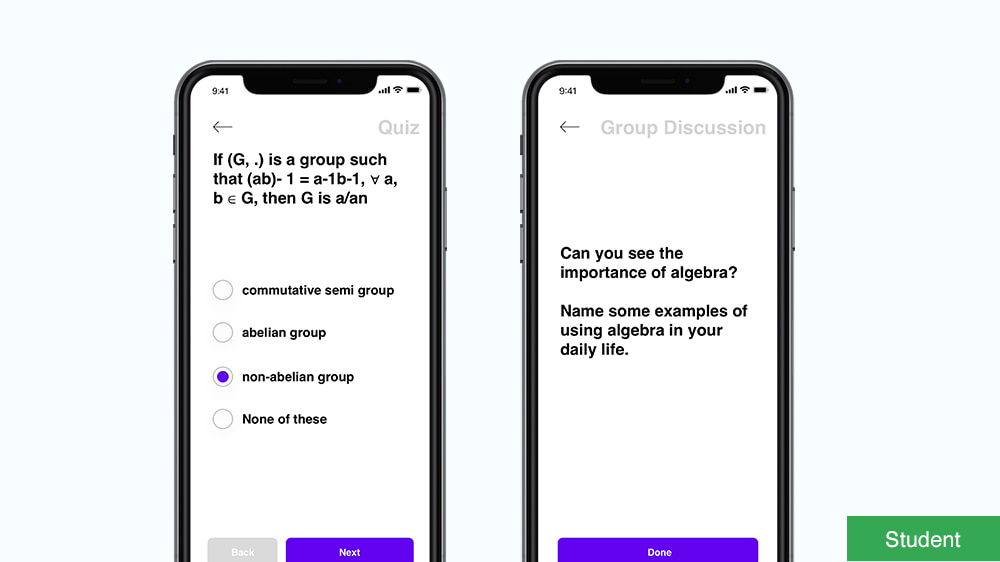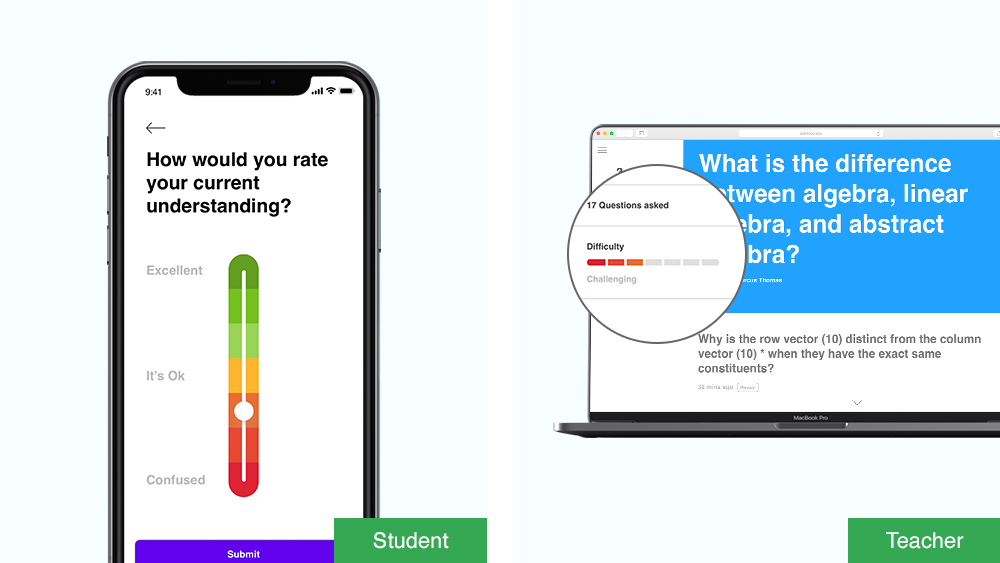IDEA
Increasing student participation in class
with technology
The problem
Shyness & social judgement can prevent a student to participate in class
It can be intimidating to interrupt a lesson to ask a question infront of a crowded lecture theatre. With the added fear of social judgment when speaking out. 1
"In a class of like 30 people, I'd feel happy to put my hand up. In a class of 110, it's got to be something quite severe to put my hand up."
Mike
Studies have shown that low self-esteem, anxiety, and general lack of confidence can be responsible for student’s passiveness in class. Fear of sounding unintelligent when pointing out their view, can make student choose to be comfortably quiet.2
Also in larger classroom settings, students tend to keep to themselves and have less opportunities to participate. 3
Why it matters
Class engagement leads to higher level of learning
Participation in class is a crticial component of learning. It provides students the chance to apply their knowledge, express their ideas and enhance their own understanding.
The students
The tech savvy generation
Many students today grow up around technology. They are familiar with tablets to messaging services. And can be more comfortable in expressing themselves through such channels.5 Integrating technology in the classroom can also set our students up for success in the digital future.
"When you type something down, it’s a lot easier to say what I feel."
Justin Lansink, 17
The Idea
A web portal where students can discuss freely and ask questions on their devices.
1 Ask questions in private
Students can ask questions privately through the portal while choosing to keep their identity private. Teachers can see the questions real-time on their dashboard.

Questions are displayed on a large font to allow the teacher to read from afar. Background colour also changes with every new question, for easier identification when a new question is asked.
Student
- The privacy provides comfort for students from being named out.
- Ensure equal opportunity for students who are less vocal to voice out.
- Questions can be asked without interrupting the lesson.
Teacher
- Learn what students usually don't understand through the questions.
- Group similar questions and answer them together.
- Decide the right juncture during the lesson to answer questions.
2 Setting up an activity
In larger classroom setting, it can be easier for teachers to deliver discussion-based activities through the portal. Activities such as quizzes, case-study analyses, role playing that can encourage everyone to participate and talk.

Student
- Every student gets to participate and think about the answer.
- Students can first respond individually and then discuss their ideas with their peers.
- Increases the feeling of class participation for a student.
Teacher
- Get a more accurate picture on student's level of understanding.
3 Real-time feedback
Students are able to provide feedback on the difficulty of the ongoing lesson. Allowing the teacher to adjust the lesson to a more comfortable pace or repeat the topic again.

Teachers can see the real-time status of the difficulty students are facing right on the dashboard.
Seeking consensus
Asking for consensus can encourage students to participate more enthusiastically in class. Because students can feel that their opinions are taken into consideration.
Student
- Ensure that everybody's opinion is heard and respected.
- Making students view their participation as a contribution to a shared experience. Such contributions builds a sense of collectivism.
Teacher
- Understanding student level of understanding can help to improve future lesson plan.
The portal provides a platform that students are familiar with, making it easier for students to participate and enhance class discussion.
Key Takeaways
Never reject an idea. Every idea can provide new perspective and can evolve to solve problems.
Sources
1. Procedia: Factors influencing classroom participation: a case study of Malaysian undergraduate students - Article
2. University of Sussex: Class participation and shyness: affect and learning to program - Article
3. CBE Life Sciences Education: Clickers in the Large Classroom: Current Research and Best-Practice Tips - Article
4. The Alantic: Help Shy Kids—Don't Punish Them - News Article
5. NYTimes: Students Speak Up In Class, Silently, Using the Tools of Social Media - News Article